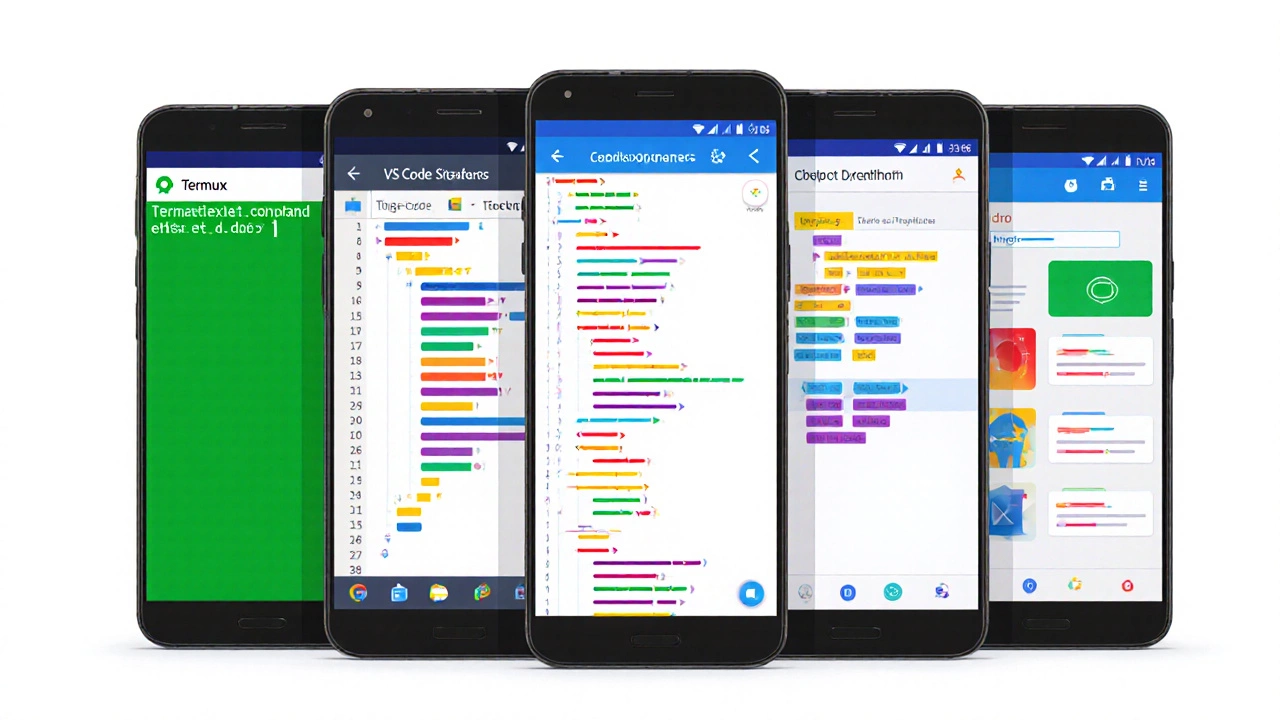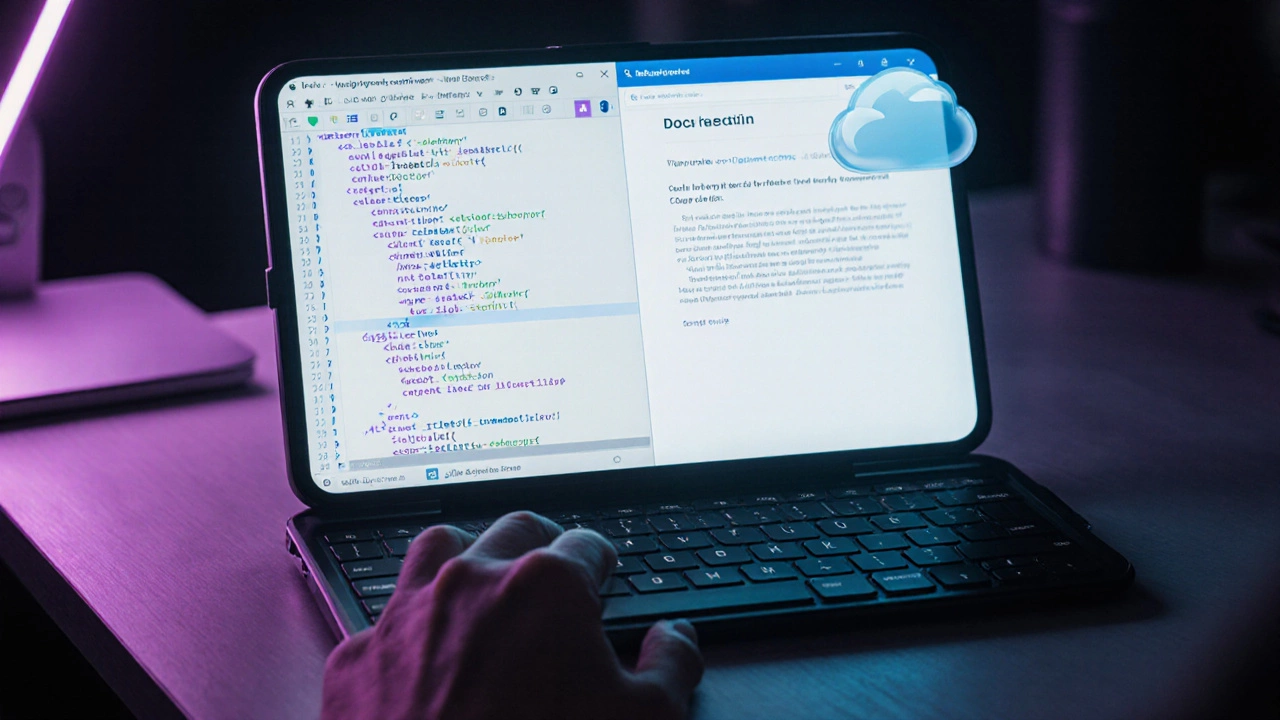Mobile Coding Cost Calculator
Calculate Your Mobile Development Costs
Estimate monthly expenses based on your usage patterns and tool choices
Breakdown:
Ever wondered if you can turn your pocket‑sized device into a real development workstation? The short answer is yes, and the long answer is packed with apps, cloud services, and clever workarounds that let you write, test, and even deploy code without ever touching a laptop.
Mobile coding is the practice of creating software using a smartphone or tablet as the primary interface. It started as a novelty for hacking on the go, but today it powers students learning to program, freelancers fixing bugs while commuting, and hobbyists experimenting with new languages while waiting in line.
In this guide we’ll explore what mobile programming actually looks like, which tools are worth your time, how to set up a portable development environment, and where to find classes that teach coding straight from a phone.
Why bother with coding on a phone?
- Instant access: No need to boot up a laptop; you can start a session in seconds.
- Cost‑effective: Many powerful editors are free or inexpensive compared to buying a full‑size machine.
- Learning on the move: Turn commute time, coffee breaks, or travel downtime into productive practice.
- Low‑distraction environment: Smaller screens can force you to focus on core logic rather than UI tinkering.
Top mobile coding apps (2025 edition)
| App | Supported Languages | Offline Editing | Cloud Sync | Price (2025) |
|---|---|---|---|---|
| Termux | Python, Node.js, C, Bash, more | Yes | Via Git, Dropbox, etc. | Free |
| Dcoder | 30+ languages incl. Java, Kotlin, Swift | Yes | Google Drive, GitHub | Free / $2.99/month premium |
| Visual Studio Code (via<\/span> GitHub Codespaces) | All VS Code extensions | No (browser‑based) | Built‑in | $0.18/hour compute |
| Replit | Python, JavaScript, HTML/CSS, more | Limited | Auto‑save in cloud | Free / $7/month Pro |
| Sketchware | Java (Android apps) | Yes | Google Drive | Free / $1.99/month premium |

Setting up a portable development environment
- Choose a primary editor. For pure code editing Termux a terminal emulator that runs a full Linux distro on Android is a solid base. iOS users can start with Carnets a Jupyter‑Notebook app that runs Python locally.
- Install the language runtime you need. In Termux you can type
pkg install python nodejsto get both Python and Node.js. - Link your code to a cloud repository. Use
git cloneto pull a project from GitHub the world’s largest code hosting platform, or set up a private repo on GitLab an open‑source alternative for CI/CD. - Configure a build tool. For JavaScript projects,
npm installworks the same in Termux. For Python,pip install -r requirements.txtdoes the trick. - Test your code. Most runtimes let you run a script directly (
python app.pyornode server.js). For web apps, usehttp-serverand open the local URL in your phone’s browser.
Learning to code with a phone: classes and resources
Many online platforms now design courses that fit a mobile‑first mindset. Here are three that work well on a phone:
- Codecademy Go: A free app that delivers interactive JavaScript and Python lessons, complete with in‑app code editors.
- SoloLearn: Offers bite‑size lessons for over 20 languages, plus a community forum you can access from any device.
- Coursera Mobile: Streams video lectures and lets you complete assignments using compatible editors like Replit.
When choosing a class, look for:
- Responsive UI that works in portrait mode.
- Embedded code editor or integration with a cloud IDE.
- Offline download options for video lessons.

Tips, tricks, and common pitfalls
- Keyboard matters: Pair your phone with a Bluetooth keyboard to boost typing speed.
- Screen real‑estate: Use split‑screen mode (Android) or Slide Over (iPad) to keep code and reference docs side by side.
- Battery management: Turn off unnecessary notifications and lower screen brightness while coding.
- Version control discipline: Commit often. Mobile connections can drop, so frequent pushes keep work safe.
- Avoid heavy GUIs: Stick to command‑line tools or lightweight editors; full‑blown IDEs drain resources quickly.
Frequently Asked Questions
Can I develop iOS apps on an Android phone?
Not directly. iOS development requires Xcode, which only runs on macOS. However, you can write Swift code in a text editor like Swift Playgrounds on an iPad, or use cloud‑based macOS services that stream a desktop to your phone.
Is it practical to run a full Django project on a phone?
Yes, for learning and prototyping. Install Python a versatile scripting language via Termux, then pip install django and run python manage.py runserver. The built‑in server is fine for testing, but you’ll want a proper host for production.
Do coding apps support debugging?
Some do. Dcoder offers a simple console view, while cloud IDEs like GitHub Codespaces provide full debugging tools through a browser interface. For on‑device debugging, you can use Node.js JavaScript runtime with built‑in inspector and attach via Chrome DevTools on Android.
What’s the best language for beginners on a phone?
Python tops the list. Its syntax is clean, and it runs smoothly in Termux or iOS apps like Pythonista. JavaScript is a close second if you’re interested in web development, because you can test code directly in the mobile browser.
Can I collaborate with teammates using just my phone?
Absolutely. Most cloud platforms (GitHub, GitLab, Bitbucket) have mobile apps that let you review pull requests, comment on code, and merge changes. Combine that with a cloud IDE and you’re effectively running a full development workflow from the palm of your hand.
Whether you’re a student scrambling for study time, a developer who travels a lot, or simply curious about coding without a laptop, the smartphone has grown into a capable coding companion. Pick the tools that match your language stack, set up a reliable sync workflow, and you’ll find that the line between “mobile” and “desktop” development is getting blurrier every day.
